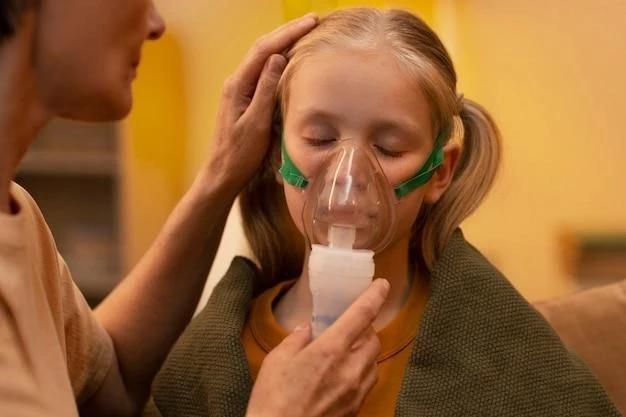Introduction
Rubinstein-Taybi syndrome (RSTS) is a rare genetic condition characterized by distinctive facial features, broad thumbs and first toes, short stature, and intellectual disability. Learn more about this syndrome.
Overview of Taybi Syndrome
Rubinstein-Taybi syndrome (RTS) is a rare genetic condition that affects approximately 1 in 100٫000 to 125٫000 newborns each year worldwide. It is characterized by distinctive facial features٫ short stature٫ intellectual disability٫ and broad thumbs and first toes. RTS can be caused by mutations in the CREBBP or EP300 genes or through microdeletion of genetic material on chromosome 16. The syndrome is inherited as an autosomal dominant trait٫ occurring sporadically in the majority of cases.
Clinical Presentation
Rubinstein-Taybi syndrome, or RSTS, presents with distinct facial features, broad thumbs and toes, short stature, and varying degrees of intellectual disability. Learn about the clinical manifestations of this syndrome.
Distinctive Facial Features
Individuals with Rubinstein-Taybi syndrome often exhibit distinct facial features such as downslanted palpebral fissures, low-hanging columella, high palate, grimacing smile, and talon cusps. These unique characteristics contribute to the recognizable facial phenotype of this syndrome.
Thumb and Toes Abnormalities
Individuals with Rubinstein-Taybi syndrome typically display abnormalities in their thumbs and toes, including broad and angulated thumbs and halluces. These physical characteristics are key features of the syndrome and contribute to the diagnostic criteria for identifying individuals with RTS.
Genetic Basis
Rubinstein-Taybi syndrome results from mutations in CREBBP or EP300 genes, or microdeletion of chromosome 16’s short arm. These genetic alterations play a crucial role in the development of the syndrome.
CREBBP and EP300 Genes Mutations
Rubinstein-Taybi syndrome, or RTS, can be attributed to mutations in either the CREBBP or EP300 genes. These genetic alterations impact the function of proteins critical in transcription processes, contributing to the development of the syndrome.
Chromosome 16p Deletion
Rubinstein-Taybi syndrome can also occur due to microdeletion of genetic material on the short arm of chromosome 16. This deletion leads to a severe form of the syndrome with various physical and intellectual disabilities. Understanding the role of this chromosomal abnormality is crucial in diagnosing and managing individuals affected by this condition.
Prevalence and Diagnosis
Rubinstein-Taybi syndrome is a rare genetic disorder with an estimated prevalence of one case per 125,000 live births globally. Diagnosing RTS involves recognizing distinctive physical and intellectual characteristics.
Incidence Rate
Rubinstein-Taybi syndrome is an extremely rare autosomal dominant genetic disease with an estimated prevalence of one case per 125٫000 live births. The syndrome presents with distinct facial features٫ intellectual disability٫ and growth issues٫ making it crucial to understand its rarity and impact on affected individuals.
Diagnostic Challenges
Diagnosing Rubinstein-Taybi syndrome can be challenging due to its rarity and overlapping symptoms with other conditions. The distinctive facial features and genetic testing play a crucial role in reaching an accurate diagnosis. Additionally, the lack of standard diagnostic criteria adds complexity to identifying individuals with this syndrome.

Associated Conditions
Rubinstein-Taybi syndrome is often associated with distinctive facial features, broad thumbs and toes, short stature, and varying degrees of intellectual disability. Learn more about these related conditions.
Intellectual Disability
Individuals with Rubinstein-Taybi syndrome often experience moderate to severe intellectual disability as one of the hallmark features of the condition. This cognitive impairment can vary in severity but significantly impacts the individual’s overall development and daily functioning.
Rubinstein-Taybi syndrome is associated with physical anomalies such as short stature, distinctive facial features, broad thumbs and toes, and potential heart and kidney defects. These anomalies contribute to the recognizable phenotype associated with this syndrome.

Treatment and Management
Management of Rubinstein-Taybi syndrome involves a multidisciplinary approach encompassing various therapeutic interventions tailored to address the individual’s specific needs. Learn more about the holistic treatment strategies for individuals with this syndrome.
Physical Anomalies
Individuals with Rubinstein-Taybi syndrome commonly display short stature, distinctive facial characteristics, broad thumbs and toes, and potential heart and kidney abnormalities. These physical anomalies are hallmark features of the syndrome, impacting the individual’s overall health and well-being.
Therapeutic Interventions
Management of Rubinstein-Taybi syndrome typically involves a combination of treatments tailored to address the individual’s specific needs. These may include physical, speech, and occupational therapy, educational support, surgical interventions for physical anomalies, and ongoing medical monitoring to address associated health issues. The goal of therapeutic interventions is to optimize the individual’s development, functionality, and quality of life.
Prognosis and Quality of Life
Individuals with Rubinstein-Taybi syndrome have a variable lifespan expectancy and experience challenges in daily functioning due to the physical and intellectual manifestations of the condition. Understanding the prognosis and impact on quality of life is essential for providing comprehensive care.
Lifespan Expectancy
Individuals with Rubinstein-Taybi syndrome have a variable lifespan expectancy influenced by the severity of physical and intellectual manifestations, associated health issues, and access to supportive care. Understanding the factors impacting lifespan can aid in providing comprehensive care and support for individuals with this syndrome.
Impact on Daily Functioning
Individuals with Rubinstein-Taybi syndrome may face challenges in daily functioning due to physical anomalies, intellectual disabilities, and associated health issues. Comprehensive care and support are crucial in addressing these impacts and enhancing the individual’s quality of life.
